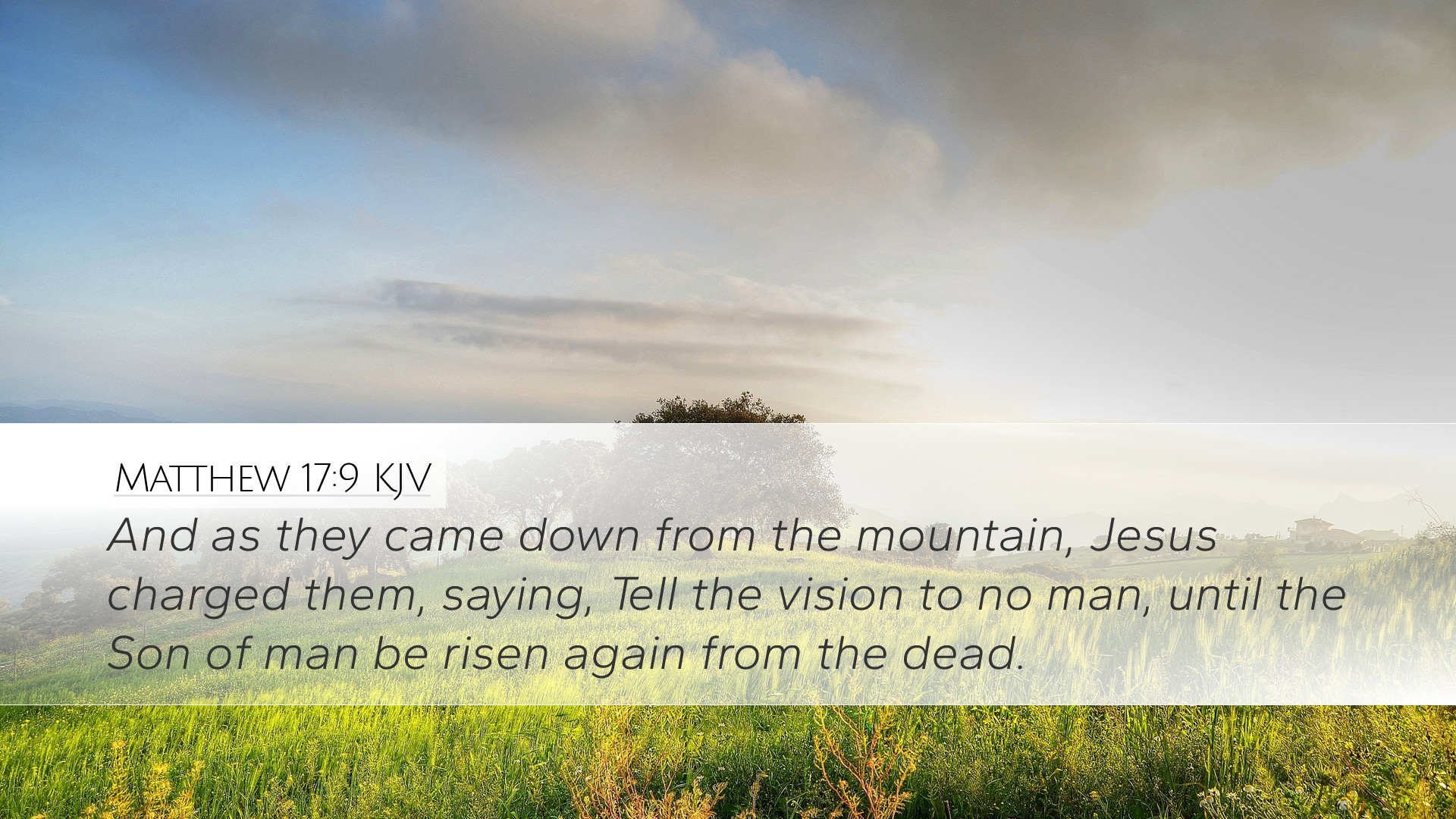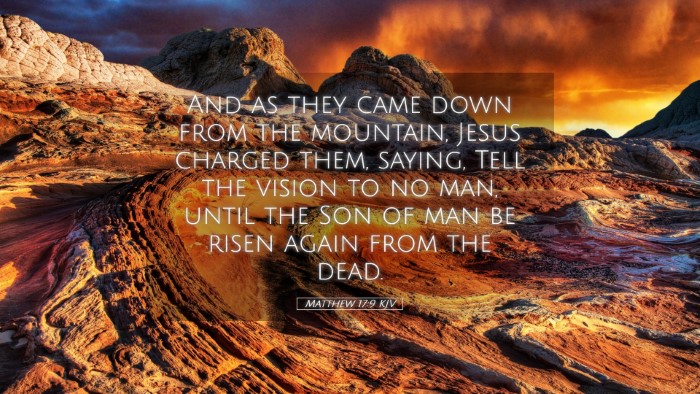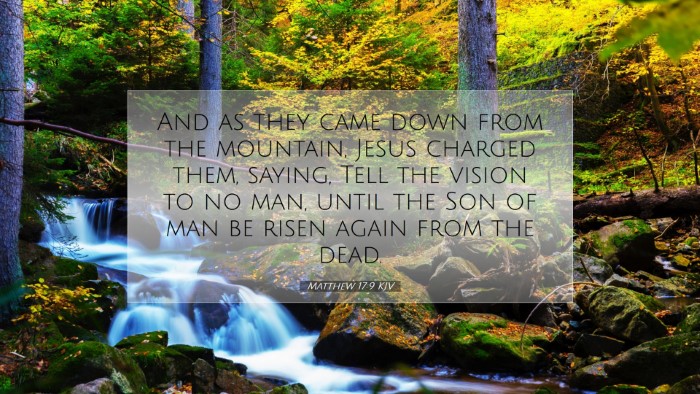Commentary on Matthew 17:9
Text of the Verse: “As they were coming down the mountain, Jesus commanded them, saying, 'Tell the vision to no one until the Son of Man is raised from the dead.'”
Introduction
This passage occurs immediately after the Transfiguration of Christ, a significant event that reveals the divine nature of Jesus to His closest disciples, Peter, James, and John. Understanding this command from Jesus sheds light on the nature of His mission and the timing of the revelation of His glory.
Insights from Matthew Henry
Matthew Henry emphasizes the importance of timing in divine revelation. In his commentary, he suggests that the disciples were to hold their profound experience in secrecy until after the resurrection, indicating that full understanding would only come through the completion of Jesus's work. Henry notes:
- Secrecy in Revelation: The command to keep the vision private suggests that certain truths about Christ must be revealed progressively.
- Resurrection's Significance: The mention of the resurrection highlights its pivotal role in Christian faith. It reaffirms Jesus as the Messiah whose suffering precedes His glory.
Insights from Albert Barnes
Albert Barnes, in his thorough annotations, explores the implications of Jesus’s command:
- Contextual Understanding: Barnes reflects on the context of the command, asserting that while the disciples experienced an extraordinary event, they were not yet prepared to proclaim it widely. Understanding Jesus's full identity would require the lens of the resurrection.
- Disciples’ Preparedness: He notes the disciples’ limited understanding at this point, suggesting that premature disclosure could mislead or confuse others regarding the nature of Christ’s kingship and mission.
Insights from Adam Clarke
Adam Clarke provides further depth by examining the nuances of the Greek text and the theological implications of the resurrection:
- Theological Implications: Clarke argues that the resurrection is the cornerstone of Christian doctrine. Without it, the vision of glory seen during the Transfiguration would lose its significance.
- Vision and Reality: He highlights the contrast between the heavenly vision and the earthly ministry, suggesting that this command served to anchor the disciples in the reality of Christ's suffering and death that lay ahead.
Theological Reflections
The command to silence reflects a profound theological principle: the revelation of God's glory often comes through the veil of suffering and humility. For pastors and theologians, this can be seen as a foreshadowing of the method of Christ's kingship, which defies worldly expectations.
Moreover, the insistence on silence carries implications for modern ministry and proclamation. It reminds the church that timing in the communication of the gospel is crucial. There is a season for proclaiming the good news, particularly in understanding the full scope of the gospel–both Christ’s suffering and glory.
Practical Applications
This passage invites several practical applications for believers:
- Discernment in Ministry: Ministers must exercise discernment in when and how to share God’s revelations with others, understanding the readiness of their audience.
- Focus on the Resurrection: Emphasizing the resurrection is vital, as it is through this act that believers gain hope and clarity about the nature of eternal life and God’s ultimate plan.
- Encouragement in Suffering: The transfiguration reminds believers that moments of divine encounter often come amidst trials; thus, they can find comfort in both suffering and the promises of God’s glory.
Conclusion
Matthew 17:9 serves as a profound call to reflect on the mystery of Christ's identity and the importance of His resurrection. By synthesizing insights from prominent biblical commentators, this commentary offers depth to understanding not only the historical context but also the ongoing implications for the church today. The command to silence is a reminder that the fullness of revelation often requires patience and a sequence that aligns with God’s plan of salvation.


